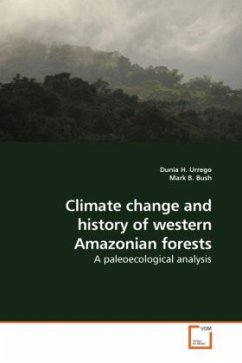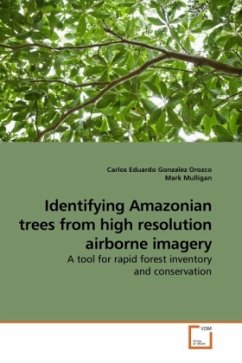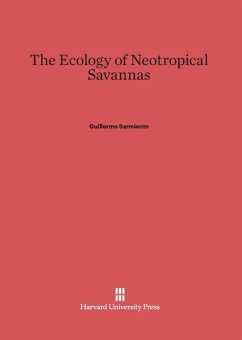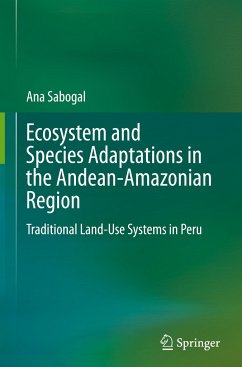
History of Amazonian Savannas in the Last 10,000 Years
Palaeoecological Records of Environmental Change and Human Occupation
Versandkostenfrei!
Versandfertig in 6-10 Tagen
59,00 €
inkl. MwSt.

PAYBACK Punkte
0 °P sammeln!
There is no arguing about the occurrence of savannasin the middle of the Amazon forest anymore. However,several questions still remain unresolved, such as:How and when were they formed? Do they all share thesame origins? As an attempt to address some of thesecomplicated issues, we tried to investigate howclimate and human activity may have influenced areasof disjoint savannas within Brazilian Amazonia.Fossil pollen, charcoal, and radiocarbon records of 6lakes were used to provide a regionalpalaeoecological history of northeastern Amazonia inthe Holocene. The analyses performed on thesesediment...
There is no arguing about the occurrence of savannas
in the middle of the Amazon forest anymore. However,
several questions still remain unresolved, such as:
How and when were they formed? Do they all share the
same origins? As an attempt to address some of these
complicated issues, we tried to investigate how
climate and human activity may have influenced areas
of disjoint savannas within Brazilian Amazonia.
Fossil pollen, charcoal, and radiocarbon records of 6
lakes were used to provide a regional
palaeoecological history of northeastern Amazonia in
the Holocene. The analyses performed on these
sediment cores allowed us to infer and date changes
in the environment, vegetation, hydrology and
sedimentation, and also to recognize human occupation
near the lakes in the last 7,000 years. Although each
individual record indicated local variation, all the
studied lakes were Holocene in age, and exhibited
rising water levels until ca. 6500 5300 years BP.
We were also able to identify the establishment of
savannas in Eastern Amazonia (Amapá), a strong signal
of human occupation in central Amazonia (Prainha),
and relatively stable savanna vegetation in the
Northernmost site (Roraima).
in the middle of the Amazon forest anymore. However,
several questions still remain unresolved, such as:
How and when were they formed? Do they all share the
same origins? As an attempt to address some of these
complicated issues, we tried to investigate how
climate and human activity may have influenced areas
of disjoint savannas within Brazilian Amazonia.
Fossil pollen, charcoal, and radiocarbon records of 6
lakes were used to provide a regional
palaeoecological history of northeastern Amazonia in
the Holocene. The analyses performed on these
sediment cores allowed us to infer and date changes
in the environment, vegetation, hydrology and
sedimentation, and also to recognize human occupation
near the lakes in the last 7,000 years. Although each
individual record indicated local variation, all the
studied lakes were Holocene in age, and exhibited
rising water levels until ca. 6500 5300 years BP.
We were also able to identify the establishment of
savannas in Eastern Amazonia (Amapá), a strong signal
of human occupation in central Amazonia (Prainha),
and relatively stable savanna vegetation in the
Northernmost site (Roraima).












